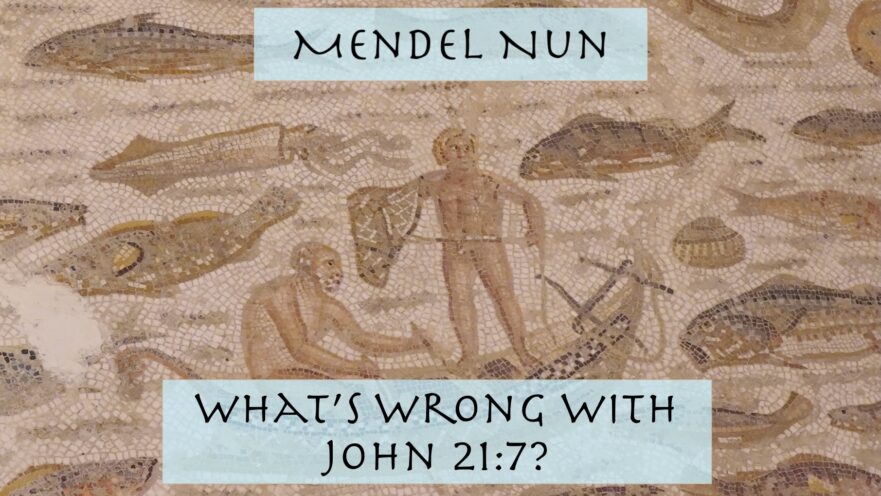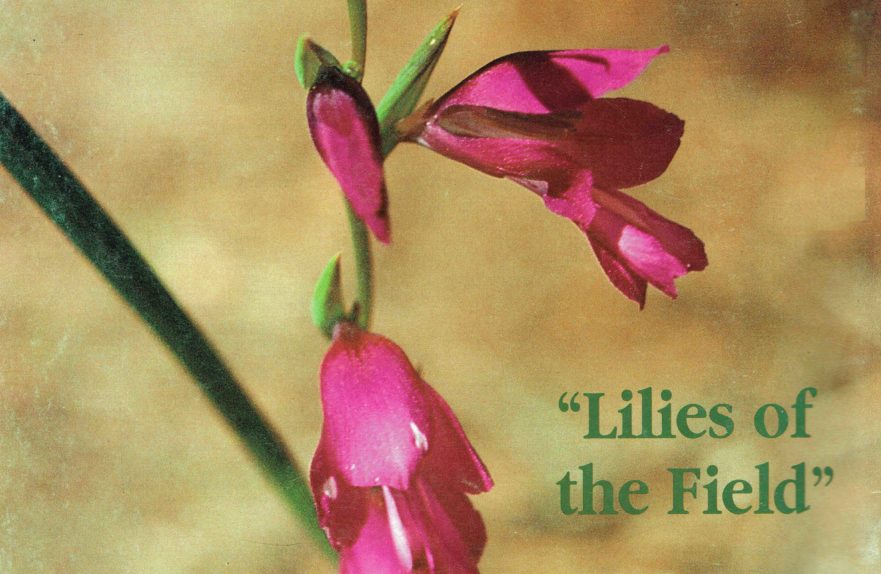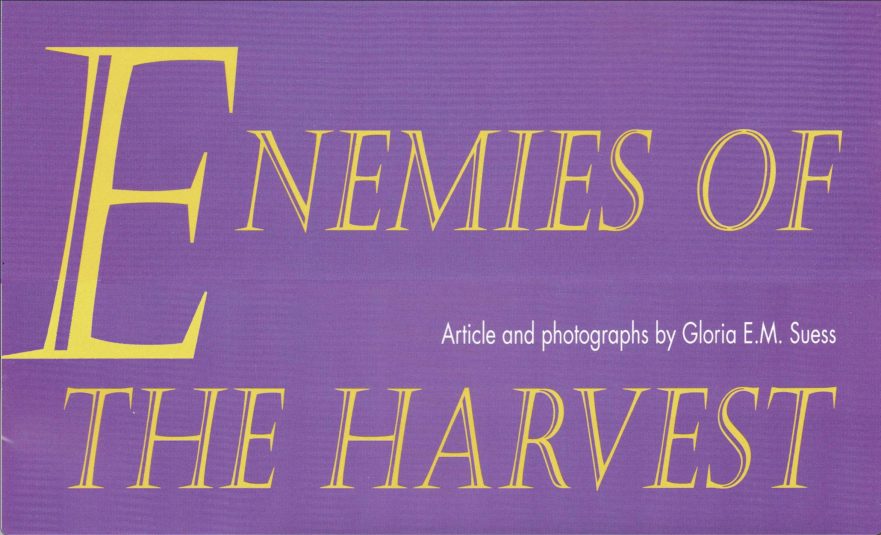In his famous Parable of the Sower, Jesus referred to seed sown in soil that was full of thistles. What did these thistles look like, and how did they succeed in choking the grain plants?
One Torah Reader, Not Seven!

Only around 100 A.D. did it become the custom to have the weekly Torah portion read by seven persons.
What Was Simon Peter Wearing When He Plunged into the Sea?

Was Peter actually fishing naked, or was he merely “stripped to the waist,” as the Living Bible says? And what did he put on before swimming to Jesus?
Stewards of God’s Keys

Jesus gave his disciple Peter the “keys of the kingdom of heaven” and promised that whatever Peter “bound” and “loosed” on earth would be “bound” and “loosed” in heaven. What scriptural allusions lurk beneath these expressions and what are their implications? How does the Jewish literary background of Matthew 16:19 help us better appreciate Jesus’ words?
Reading the Landscape: Neot Kedumim, the Biblical Landscape Reserve in Israel

Neot Kedumim is dedicated to exploring and demonstrating the ties between the biblical tradition and the nature and agriculture of the land of Israel, as expressed in Jewish and Christian prayers, holidays and symbols. The reserve’s reconstructed biblical landscapes are open to guided and self-guided tours by groups and individuals.
The Tetragrammaton
Regarding your article “‘Jehovah’—A Christian Misunderstanding” that appeared in the November-December 1991 issue of Jerusalem Perspective, you indicate that Galatinus gave the Church “Jehovah” as a misnomer for the name of God (p. 6). It is my understanding that this happened much earlier.
Streams of Living Water: The Feast of Tabernacles and the Holy Spirit

This year the festival of Sukkot, or Tabernacles, takes place on October 9—16. JERUSALEM PERSPECTIVE has asked the famous biblical landscape reserve, Neot Kedumim, to provide our readers with some of the reserve’s wonderful insights into this festival, and Neot Kedumim staff member Beth Uval has contributed the following.
Beating the (Thorny) Bushes

Bushes, thistles, briars and brambles are a thorny subject for English translators and expositors of the Hebrew Bible. It seems that the Greek writers of the Gospels did not have a soft time with them either.
Six Stone Water Jars

In 1969, large stone containers were unearthed in the Jewish Quarter excavations in Jerusalem’s Old City. “What were these vessels used for?” the archaeologists asked. The Gospel of John provided the answer.
What’s Wrong with John 21:7?

There seems to be a problem with John 21:7. The text states that Peter was naked. Did good Jews in that time ever go out fully naked?
Lilies of the Field

In his Sermon on the Mount, Jesus mentioned “lilies of the field.” Tulips, poppies, daisies and other wildflowers have been suggested as candidates for “lilies of the field.” In this photo essay we discover the subtleties of his message about these beautiful, short lifespan flowers.
Hospitality: Heritage of the Church

Hospitality, charity and visiting the sick were priorities in the teaching of Jesus and other sages of his day. In the following article, Dr. Marvin Wilson highlights for Christians the importance of hospitality.
Is the Sage Worth His Salt?

The Gospels record that questions were sometimes put to the sage Jesus of Nazareth in order to “test” him. According to Joseph Frankovic, the questioner’s intent may not always have been hostile.
The Appearance of Jesus: Hairstyles and Beards in Bible Times

No one knows for sure how Jesus looked in the eyes of his contemporaries. However, there is evidence that suggests the hair of Jesus may have been rather short—black or dark in color—and his beard closely trimmed.
Rabbinic Literature: A Spiritual Treasure for Christians

The sayings of the sages are a treasure that should be read first of all for their own sake.
Jesus’ Devout Jewish Parents and Their Child Prodigy

In the infancy narrative found in chapters one and two of Luke’s gospel, Luke has provided excellent character references for Mary, Joseph and Jesus. Jesus’ mother and father show piety far beyond the usual, and the young Jesus is eager to be in the temple studying Torah with the teachers of Israel.
The Place of Women in First-century Synagogues

Today, public worship can take place in a synagogue only if at least ten adult Jewish males are present. Women do not qualify as part of this quorum. Furthermore, women are separated from men within the synagogue: women worship in an ezrat nashim, a balcony, or section with a divider, located beside or behind the men’s section. Things were considerably different in Jesus’ day.
That Small-fry Herod Antipas, or When a Fox Is Not a Fox

We need to start translating “fox” with its proper Hebraic cultural meaning.

